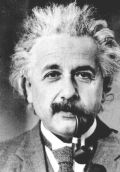Every pack of cigarettes has a warning from the Surgeon General stating that smoking can be harmful to your health. You are not stupid. You understand this. You feel the harmful effects every time that you cough or have a sore throat, but this has not stopped you from smoking. Why? Because the reasons for smoking are mostly psychological. People are seduced to try tobacco by the glamorization of smoking in the movies and in advertisements. Addiction to nicotine makes it hard to quit smoking once you have started, but this addiction can be overcome in two weeks once the psychological reasons for smoking are eliminated.
 Association of activities establishes Pavlovian reflexes |




Reasons why people start to use tobacco:
- On a dare to show that you are not timid or afraid.
- To fit with the crowd (all my friends do it)
- To appear sophisticated or cool
- To be grown-up
- To assert your independence
- As a sign of protest, rebellion, or to defy authority
- Free samples from friends or advertisers
- Influences from people you respect and admire
- Parents or relatives smoked
- Images of famous actors, movie stars, or role models
(Humphrey Bogart who eventually developed throat cancer,
news anchorman Peter Jennings who developed lung cancer) - Baseball players who use chewing tobacco
- Famous scientists
(Einstein is the prototype of intellectual smokers.
He looks so proud with a pipe in his mouth.)
- Portrayals by cigarette advertisements
- Joe Camel (cartoon character aimed at young people.
Joe's face has features of a scrotum or other private parts
and provides subliminal sex appeal) - Marlboro man (two of the models who portrayed the rugged
cowboy eventually died of lung cancer) - Kool cigarettes used a cartoon penguin as an advertisement mascot.
- Virginia slims (thin, sophisticated, and independent woman)
- Joe Camel (cartoon character aimed at young people.
- To try to lose weight
- To calm your nerves
- As a kind of "air freshener" when using the toilet
To perpetuate tobacco addiction, cigarette manufacturers have also boosted the amount of nicotine in tobacco and modified cigarette designs to increase the number of puffs per cigarette. Harvard School of Public Health researchers found that the amount of nicotine that smokers typically consumed per cigarette, regardless of brand, rose by an average of 1.6 percent per year between 1998 and 2005 across all the major cigarette market categories (mentholated, non-mentholated, full-flavor, light, ultralight, etc.). This is an increase of 11 percent in the amount of nicotine per cigarette over a seven-year period. The higher drug levels make it harder for smokers to quit.
Why do you smoke now?
You have been smoking for a while and you have matured. Now you know that smoking has not made you smarter, or cooler, or sexier. Smoking has not helped you to achieve your goals. Your accomplishments have been made in spite of smoking, but you are more aware that your health suffers. You can tell by your burning eyes, your hacking cough, and the phlegm in your throat. So, why do you still smoke? Most people continue smoking out of habit. They light a cigarette without even thinking. But sometimes people smoke under specific situations as a kind of ritual.
Associating activities with smoking establishes Pavlovian reflexes. Pavlovian reflexes are named after Dr. Ivan Pavlov who was able to make his dogs salivate in the absence of food by just ringing a bell that had been associated with the dog's feeding time. In the same way, activities that you have associated with smoking, such as drinking coffee, will act as triggers. The mere sight of a cup of coffee will cause you to reach for your cigarettes without any conscious thought. Seeing friends smoking cigarettes, watching movies where the actors smoke, or the smell of cigarette smoke may trigger the psychological desire to smoke. Researchers have found that smokers with a damaged insula, a region of the brain linked to emotion and feelings, quit smoking easily and immediately. The study provides direct evidence that addiction to nicotine in tobacco smoke takes control of some of the neural circuits in the brain.
These are some of the reasons why people smoke:
- No particular reason, but the cigarettes are handy
- To reduce a feeling of anxiety or nervousness
- To calm down when upset or angry
- To socialize with other smokers
- When feeling restless
- As relaxation
- To take a break from work
- While having coffee or tea
- When having a drink with friends
- To satisfy an urge to smoke
- After a meal
- After sex
- To pass the time while waiting for someone.
- When driving in the car
- When feeling depressed
- When drinking beer, wine, or liquor
- To celebrate something
- To think about a difficult problem
Many smokers feel that they don't smoke enough to be harmful, but this kind of thinking is only self-delusion that justifies a bad habit. You need to understand your degree of dependence on tobacco to be able to quit successfully. Answer the following questions and write down the answers in a log book that you can use to monitor your progress as you reduce your dependence on tobacco.
- I smoke: a) occasionally, b) daily, c) pack a day, d) more
- How many cigarettes do you usually smoke each day?
- How soon after you wake up do you usually smoke your first cigarette of the day?
- How much money do you usually spend on cigarettes each day?
- When was the last time you smoked: a) today, b) 3 days ago, c) a week ago, d) a month ago
No comments:
Post a Comment